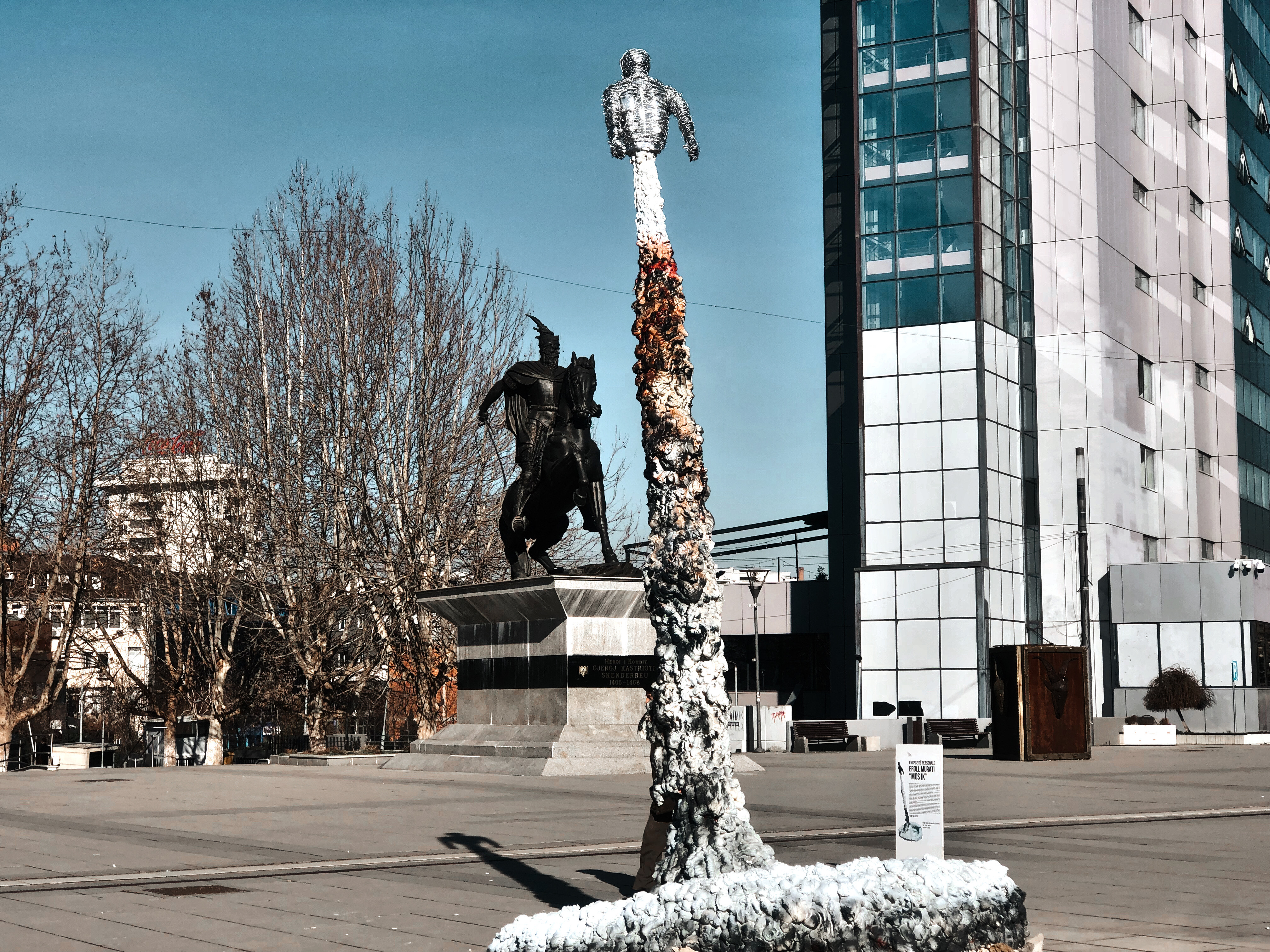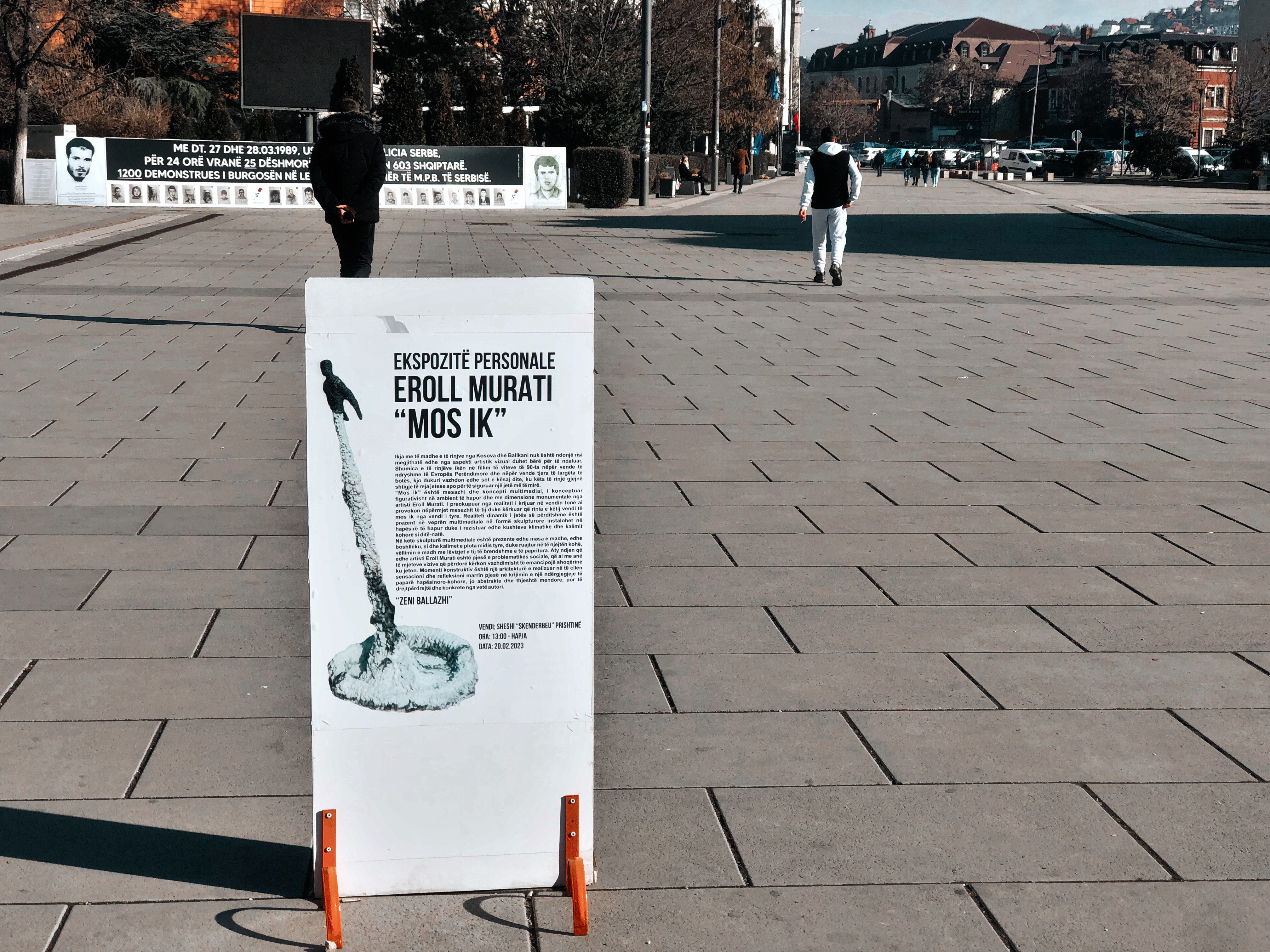

A sculpture placed in front of the government of Kosovo building sends a strong appeal to the nation’s youth not to abandon it.
A body positioned westwards with open arms like a comic book superhero and with pseudo-leg elongated beyond the ordinary, roots not too reinforced for the earth and with a deformed body, is placed in front of the Kosovo government building.
The purpose of the sculpture, called “Do not go away”, expresses the great concern of Kosovar society – migration – the abandonment of Kosovo by young people for Western countries.
At first glance, the figure that resembles a young man seems to have left for another dimension with as much power as he has, so that his body has been deformed, as if he left his volume behind in Kosovo while on his way West.
The sculpture has no legs, only hands, which in the position it holds seeks help through them, as much as the power to climb higher. There are no eyes to express pain or joy, only a slightly raised head that, in one form or another as much as it carries a prayer, requires strength, it also shows rebellion.

The sculpture’s body, all encased in copper, resembles that of a gladiator. The exposed chest resembles the iconic painting of an Albanian nationalist figure, the leader of the forces of the Albanian League of Prizren, Mic Sokoli, putting his chest forward to stop the war cannon, watching as his comrades retreated. This act of Mic Sokoli is described as heroic. However, this sculpture does not represent a heroic act, but pain and a prayer over the abandonment of Kosovo. The open chest does not wait for the war cannon but in freedom waits for an opportunity to run away.
“Do not go away” is called an artistic installation. Paradox. The sculpture’s human legs replaced by a long pseudo-leg indicate escape. This runaway leg gives the impression that it was created from the remains of the internal organs of the human body. This disembodied body resembles a body disfigured and disintegrated by pain.
The multimedia sculpture by the artist Eroll Murati shows a man moving away from his roots which have been replaced by some small weak stones placed in the main square of Kosovo, Skanderbeg Square.

The artist appeals to young people not to leave the country.
“The purpose of the sculpture is to influence, in an artistic way, stopping the momentum of young people, workers, doctors and others from leaving the country,” said Murati.
Curator Zeni Ballazhi says that through the work ‘Do not go away,’ Murati provokes with a message, urging young people not to run away from their country.
“The constructive moment is a realized architecture in which sensation and reflection participate in the creation of an unprecedented spatial-temporal consciousness, not abstract and simply mental, but direct and concrete by the author himself,” says Ballazhi.
Kosovo has been dealing with the phenomenon of migration for years. Many young people, such as doctors, nurses and construction workers, have migrated to work in Western countries.
According to a document published by the Governmental Migration Authority, in the period 2018-2020, 71,799 people emigrated from Kosovo.
The projection of the Statistics Agency of Kosovo for the years 2011 to 2061 shows that 2034 is expected to be the year when Kosovo will begin to face depopulation as a demographic problem, which will then continue to deepen from decade to decade.
The total resident population in Kosovo was 1,798,188 inhabitants, according to the data of the Statistics Agency of Kosovo in January 2021.
“Do not go away” will remain in the capital’s square until the beginning of March.
Murati plans to exhibit the sculpture in other countries that face the same flight of citizens to other countries.
21 February 2023 - 14:22

Once built to protect lives during war and natural disasters, two conc...

From flour bags to gallery walls, the young Gazan artist Hussein al-Je...

Kosovo art students bring their ideas to life by exploring current eve...

Kosovo’s artists miss out on regional collaboration opportunities be...